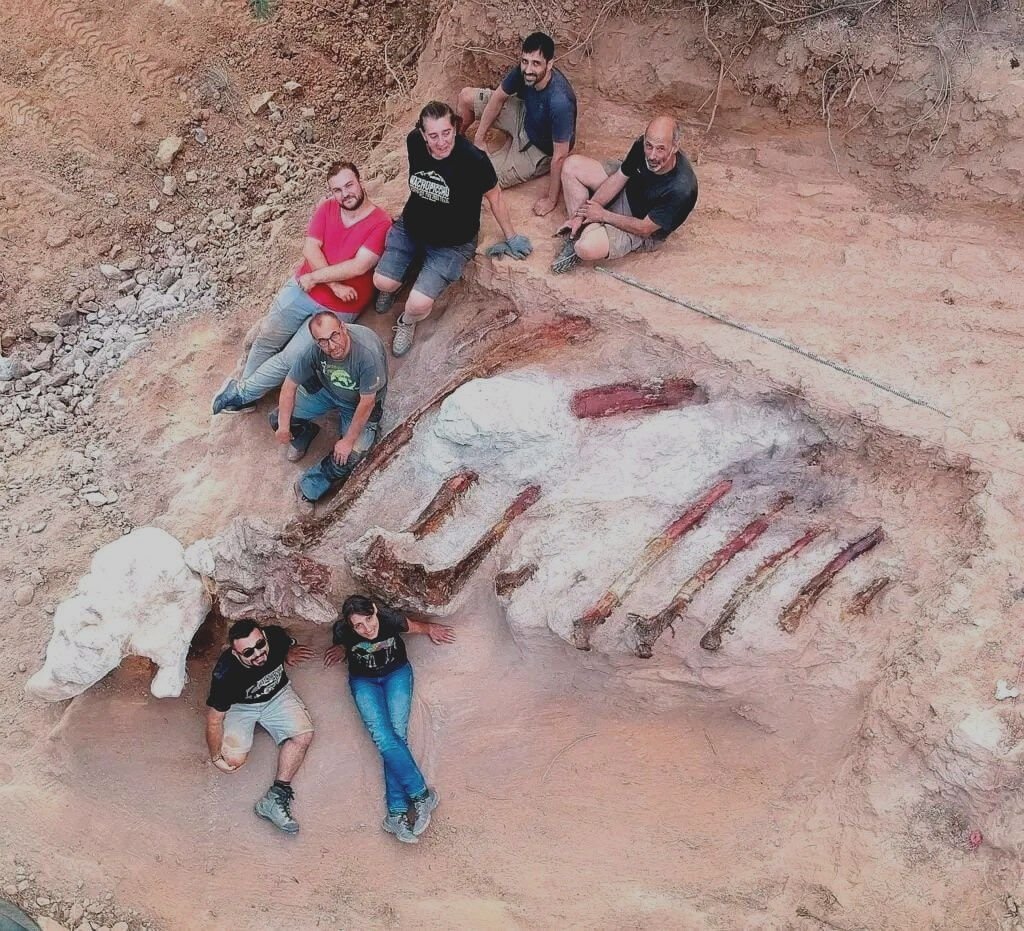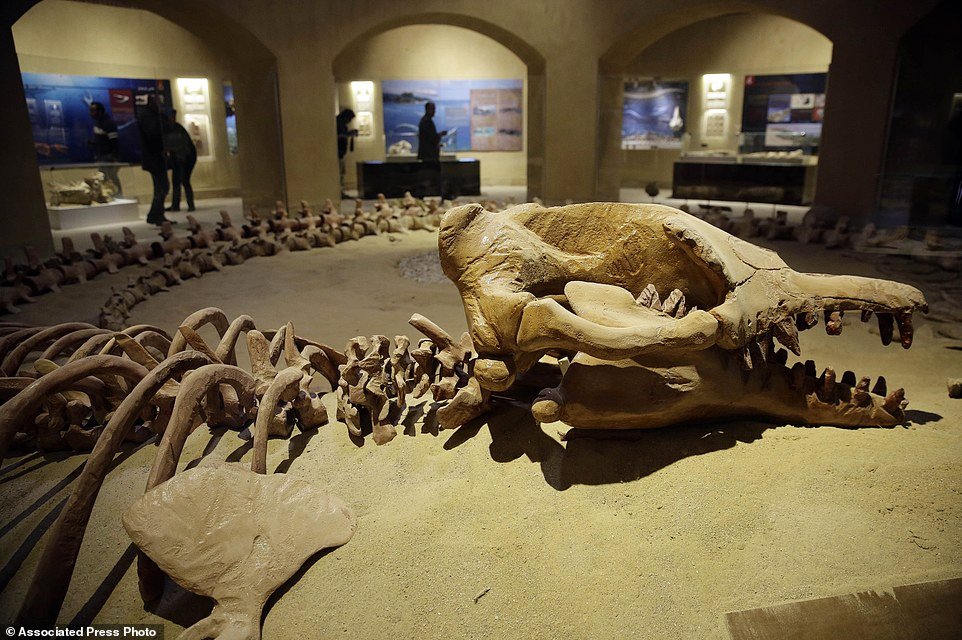A Portuguese man accidentally discovered the bones of what may be the largest dinosaur ever found in Europe.
Paleontologists uncovered vertebrae and ribs from an enormous sauropod in Portugal. Instituto Dom Luiz (Faculty of Sciences of the University of Lisbon)
While doing construction on his Pombal, Portugal, property in 2017, he noticed fossilized bone fragments in his yard. The man got in touch with researchers, who later that year started the first digs.
The effort to dig up this dinosaur has been ongoing, and this month, Spanish and Portuguese paleontologists unearthed more of the gigantic remains. So far, a “important set of elements of the axial skeleton” has been collected—including vertebrae and 10-foot-long ribs, per a statement.
"It's one of the biggest specimens discovered in Europe, perhaps in the world," Elisabete Malafaia, a paleontologist from the Faculty of Sciences at the University of Lisbon in Portugal, tells Agence France-Presse (AFP).
The dinosaur found in Portugal lived about 160 to 100 million years ago, during the Upper Jurassic to the Lower Cretaceous. Instituto Dom Luiz (Faculty of Sciences of the University of Lisbon)
The bones likely belonged to a sauropod, a type of plant-eating dinosaur with a characteristically long neck and tail. This group of dinosaurs included the largest land creatures ever to roam the Earth. Scientists estimate this specimen, which may belong to the Brachiosauridae family, was about 39 feet tall and 82 feet long, per a statement, and lived about 160 to 100 million years ago, during the Upper Jurassic to the Lower Cretaceous.
The Pombal region in central Portugal, where the bones were found, “has an important fossil record of Late Jurassic vertebrates,” Malafaia says in the statement, and it has allowed for several “very significant” discoveries about the animals that lived there 145 million years ago. Still, she says this find was rather unique.
Malafaia writes in the statement, "It is not common to see all the ribs of an animal like this, let alone in this position, keeping their original anatomical position. For large-sized dinosaurs from the Portuguese fossil record, this kind of preservation is relatively rare and indicates particular and unusual environmental and taphonomic features," she tells CBS News' Christopher Brito.
According to CBS, the way this specimen was kept suggests that more of its bones may yet be discovered, and the researchers intend to continue their digs next year.


















